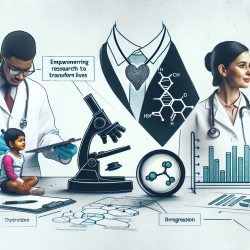Introduction
In the dynamic field of speech-language pathology, understanding the early influences on communication development is paramount. A recent scoping review titled Swallowing behaviours and feeding environment in relation to communication development from early infancy to 6 years of age sheds light on the intricate relationship between early swallowing functions, feeding environments, and communication development. This blog explores how practitioners can leverage these insights to enhance their therapeutic approaches and improve outcomes for children.
Understanding the Research
The scoping review conducted by Flowers et al. (2019) provides a comprehensive overview of the existing literature, highlighting the significant role of early swallowing and feeding behaviors in shaping communication development. The review identifies key gaps in current research and suggests directions for future investigations. By mapping the current state of literature, the study aims to advance knowledge translation and inform clinical practices.
Key Findings
The review reveals several critical insights:
- Swallowing and feeding behaviors are closely linked to the development of communicative systems from infancy to six years of age.
- Healthy feeding environments can foster optimal communication development, while impairments can lead to delays.
- Understanding the physiological and environmental precursors of communication can guide early detection and intervention strategies.
Implications for Practitioners
For practitioners, these findings underscore the importance of integrating swallowing and feeding assessments into early communication evaluations. By recognizing the signs of potential impairments early, speech-language pathologists can tailor interventions to address both feeding and communication challenges. Here are some practical steps practitioners can take:
- Conduct Comprehensive Assessments: Incorporate evaluations of swallowing and feeding behaviors into routine assessments to identify potential issues early.
- Collaborate with Caregivers: Educate parents and caregivers about the importance of a supportive feeding environment and provide strategies to enhance it.
- Stay Informed: Keep abreast of the latest research and developments in the field to continuously refine therapeutic approaches.
Encouraging Further Research
While the scoping review provides valuable insights, it also highlights the need for further research to fill existing gaps. Practitioners are encouraged to contribute to this growing field by engaging in research initiatives and sharing findings with the broader community. By doing so, they can help shape the future of communication development interventions and improve outcomes for children worldwide.
Conclusion
The relationship between early swallowing, feeding environments, and communication development is a critical area of study that holds the potential to transform therapeutic practices. By understanding and applying the insights from the scoping review, practitioners can enhance their skills and make data-driven decisions that lead to better outcomes for children.
To read the original research paper, please follow this link: Swallowing behaviours and feeding environment in relation to communication development from early infancy to 6 years of age: a scoping review protocol.










